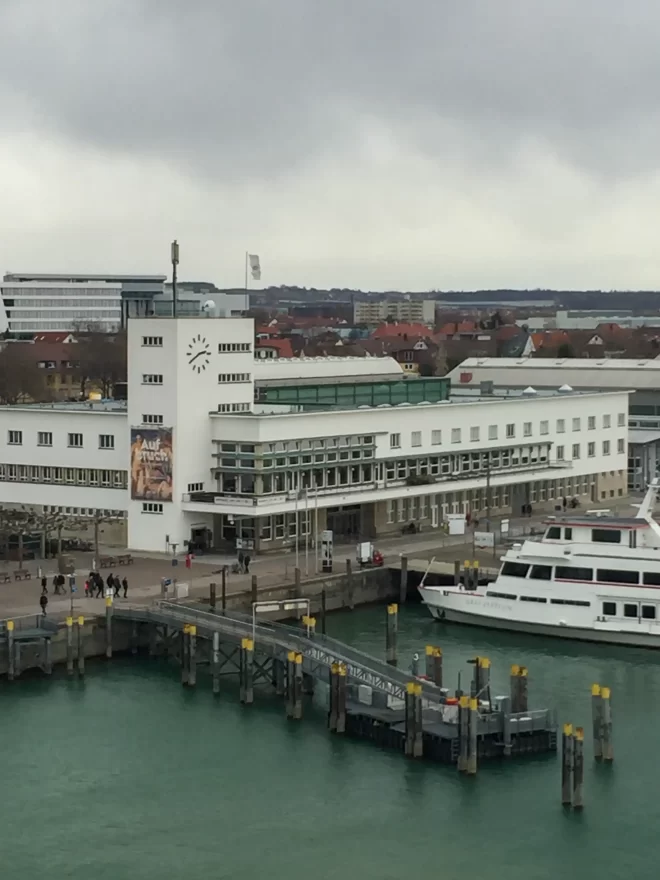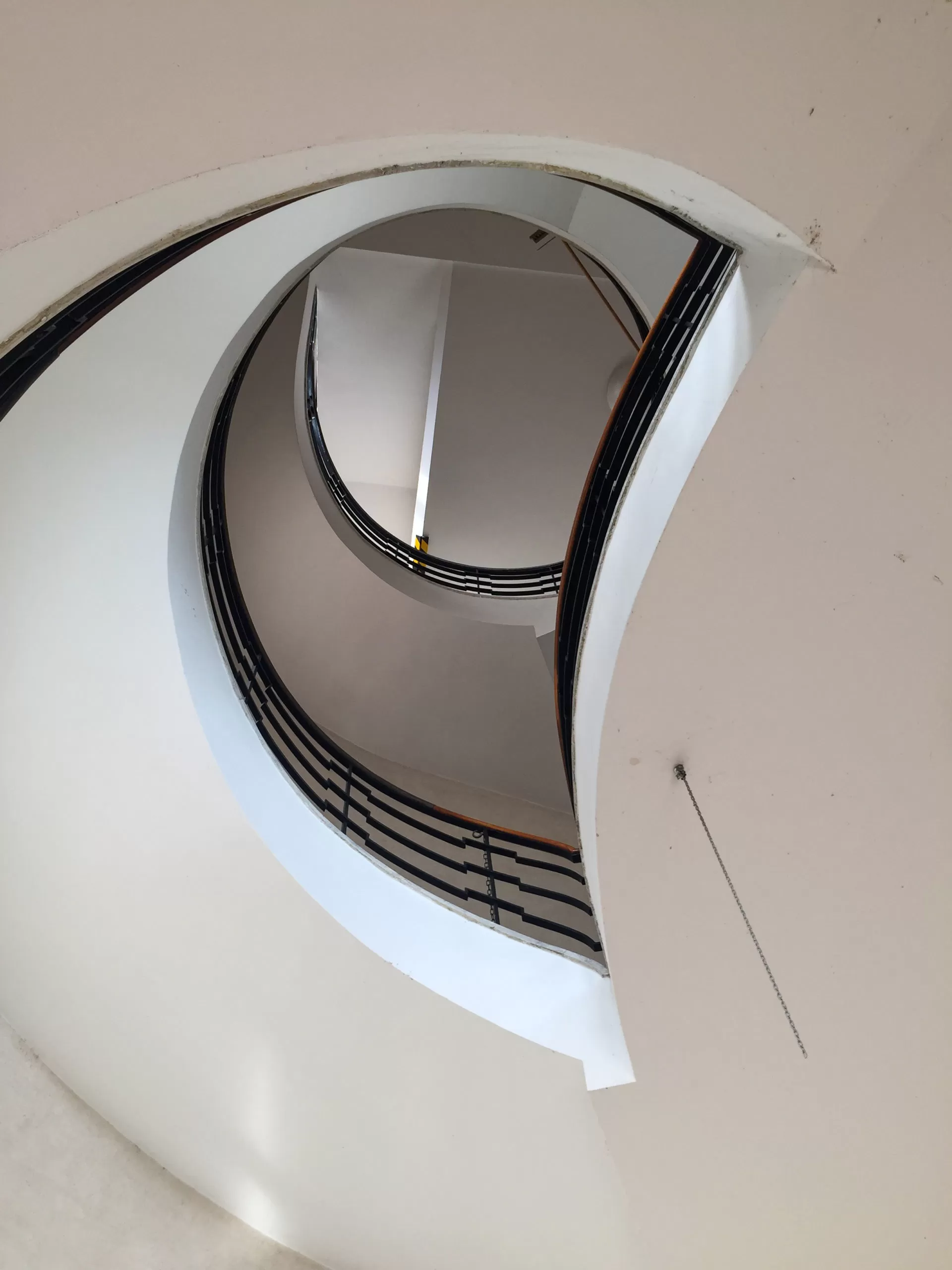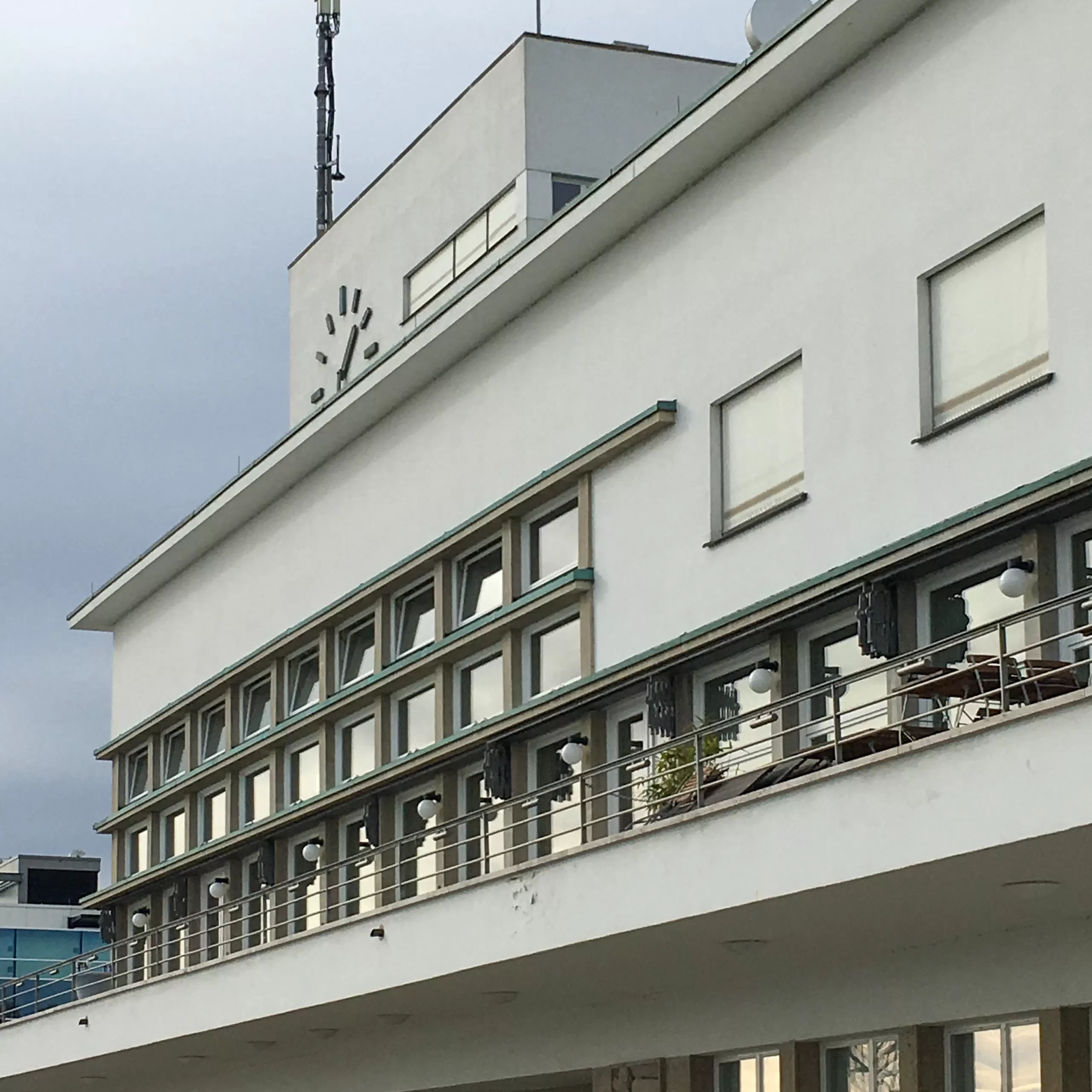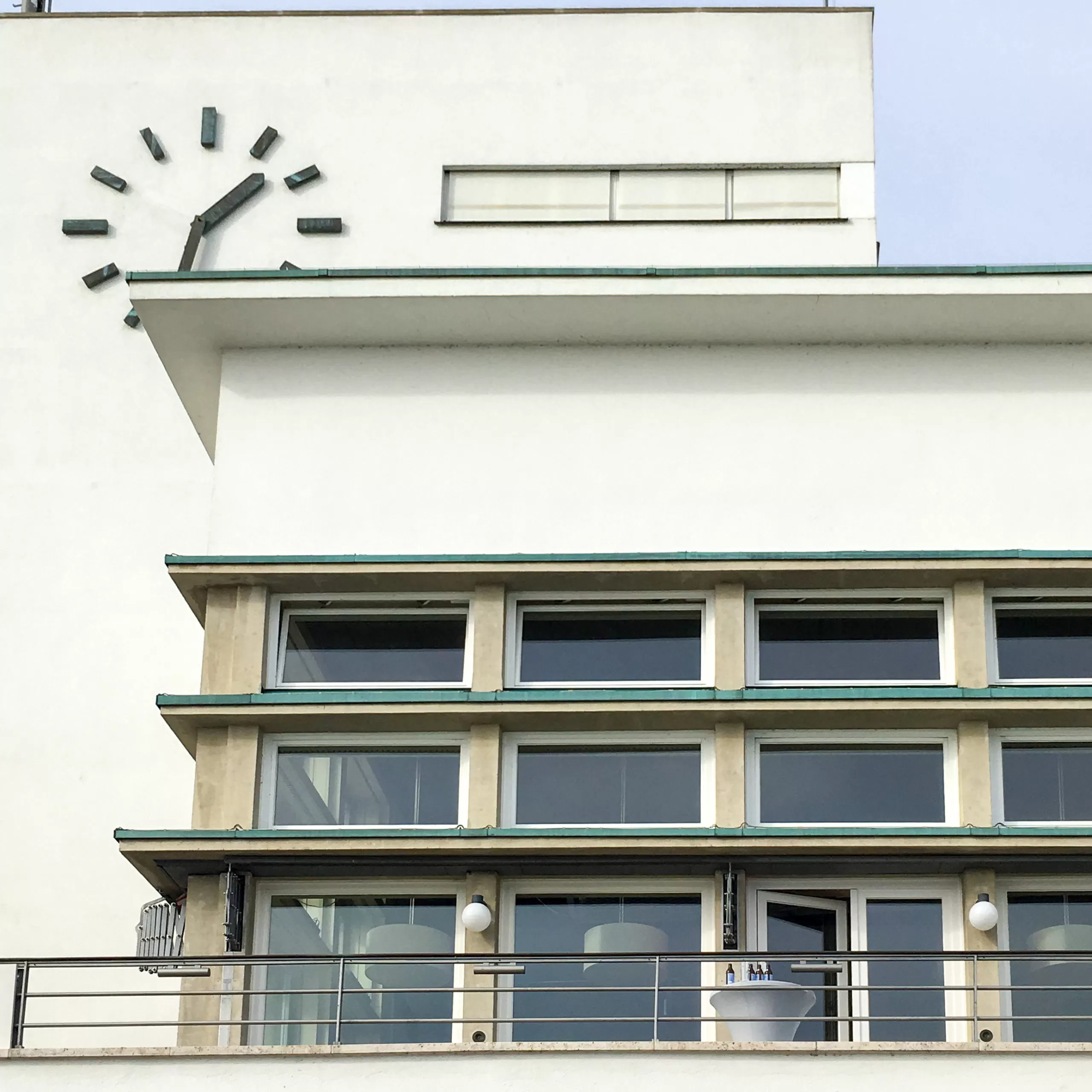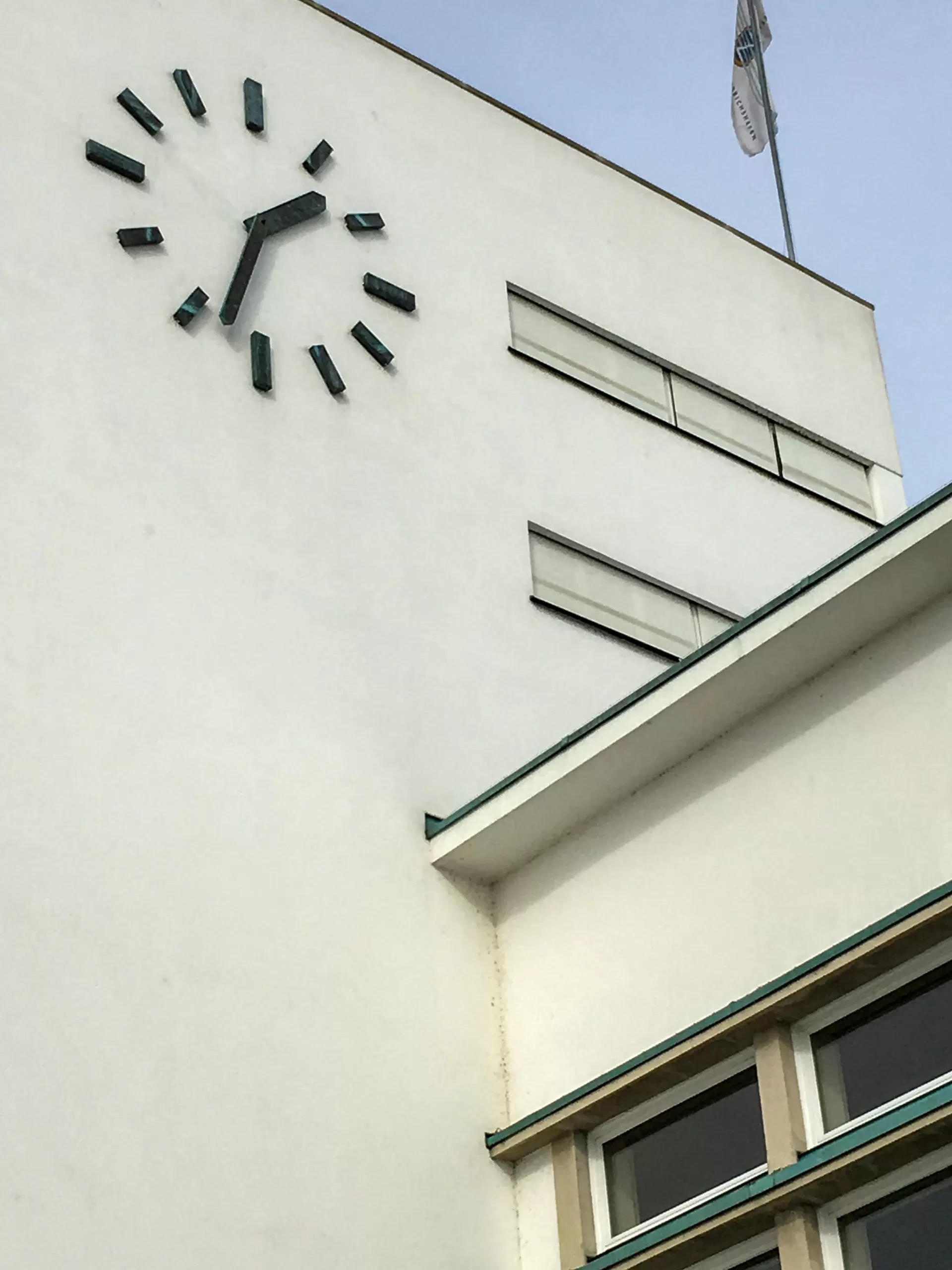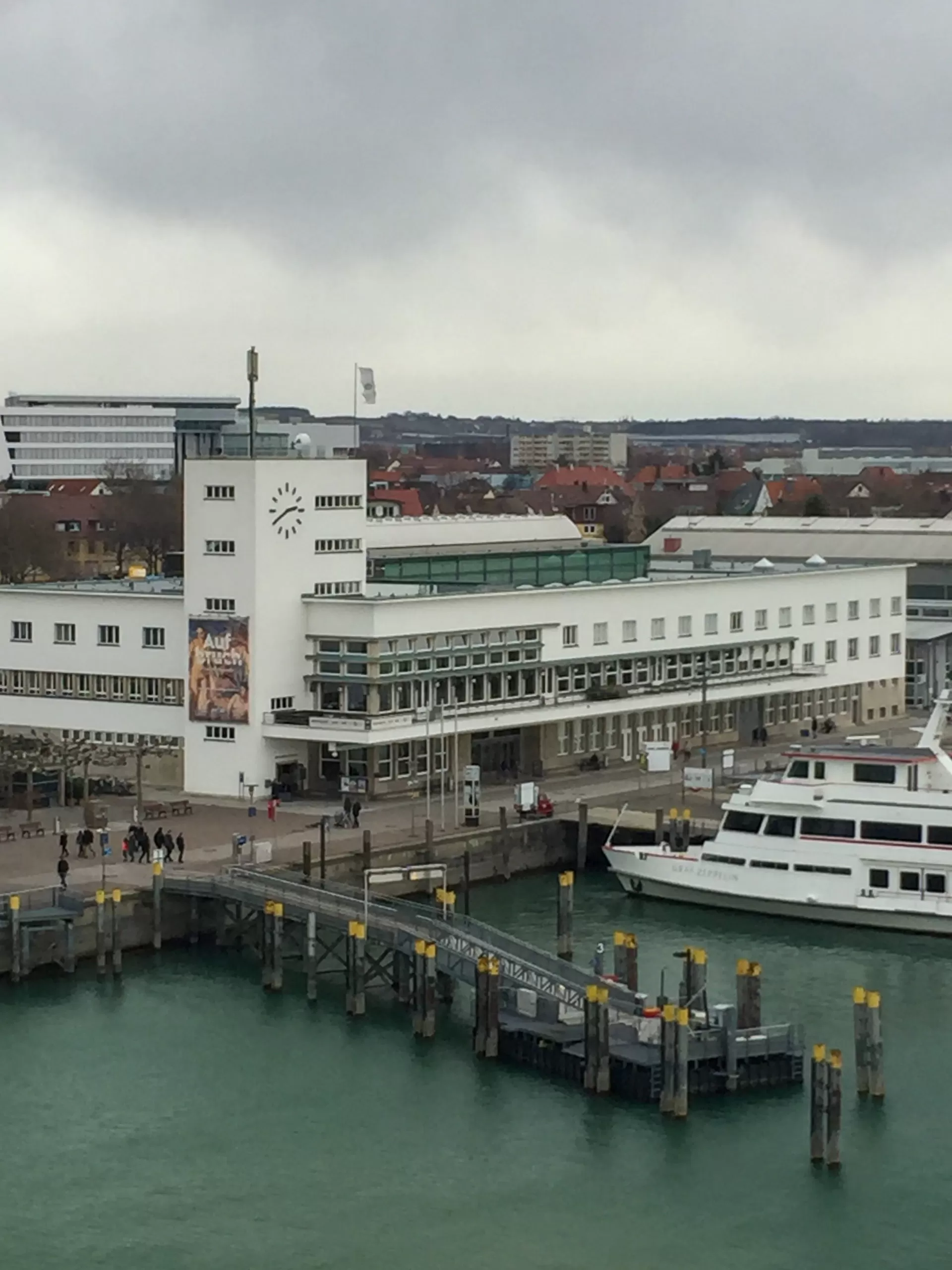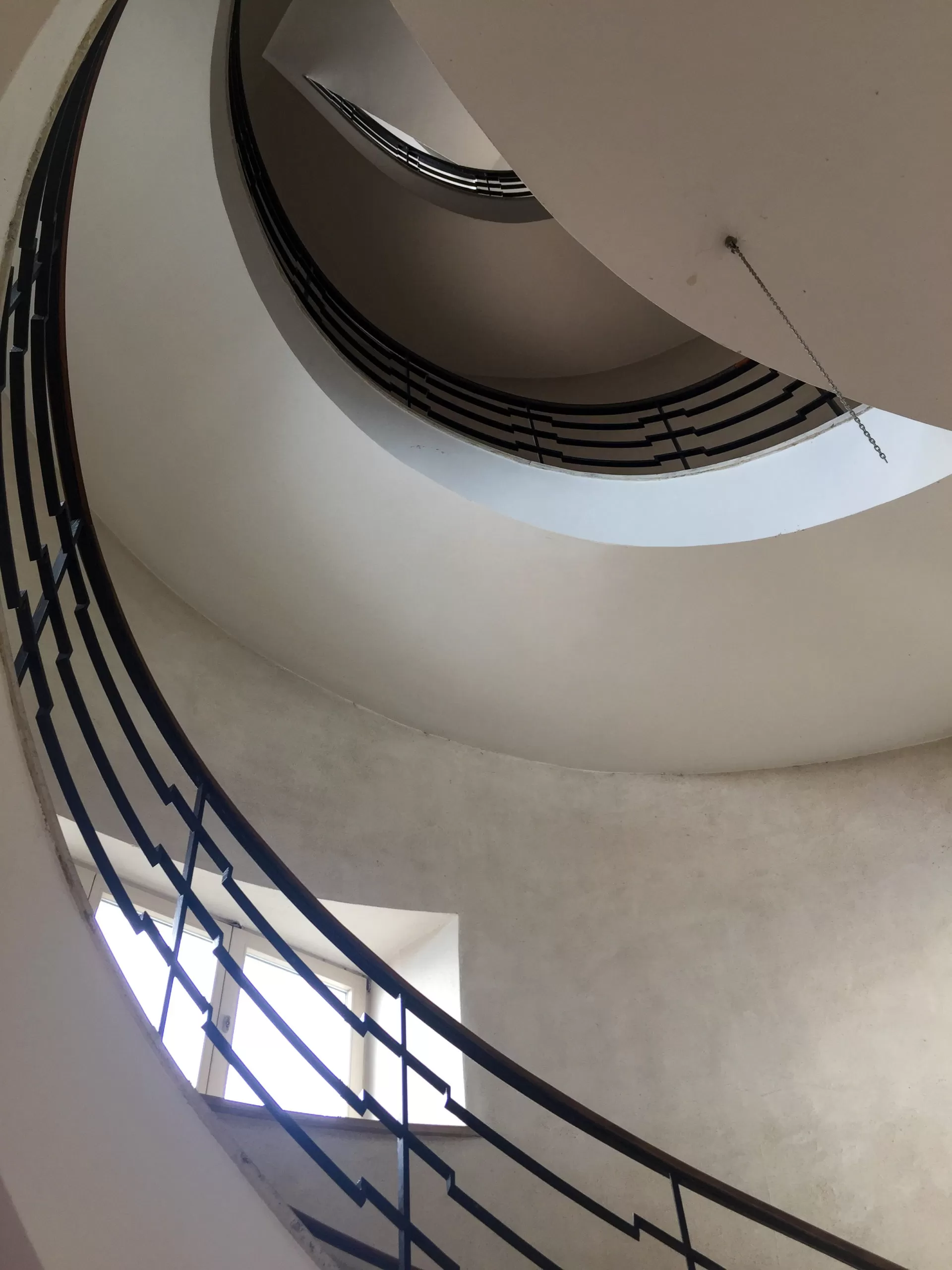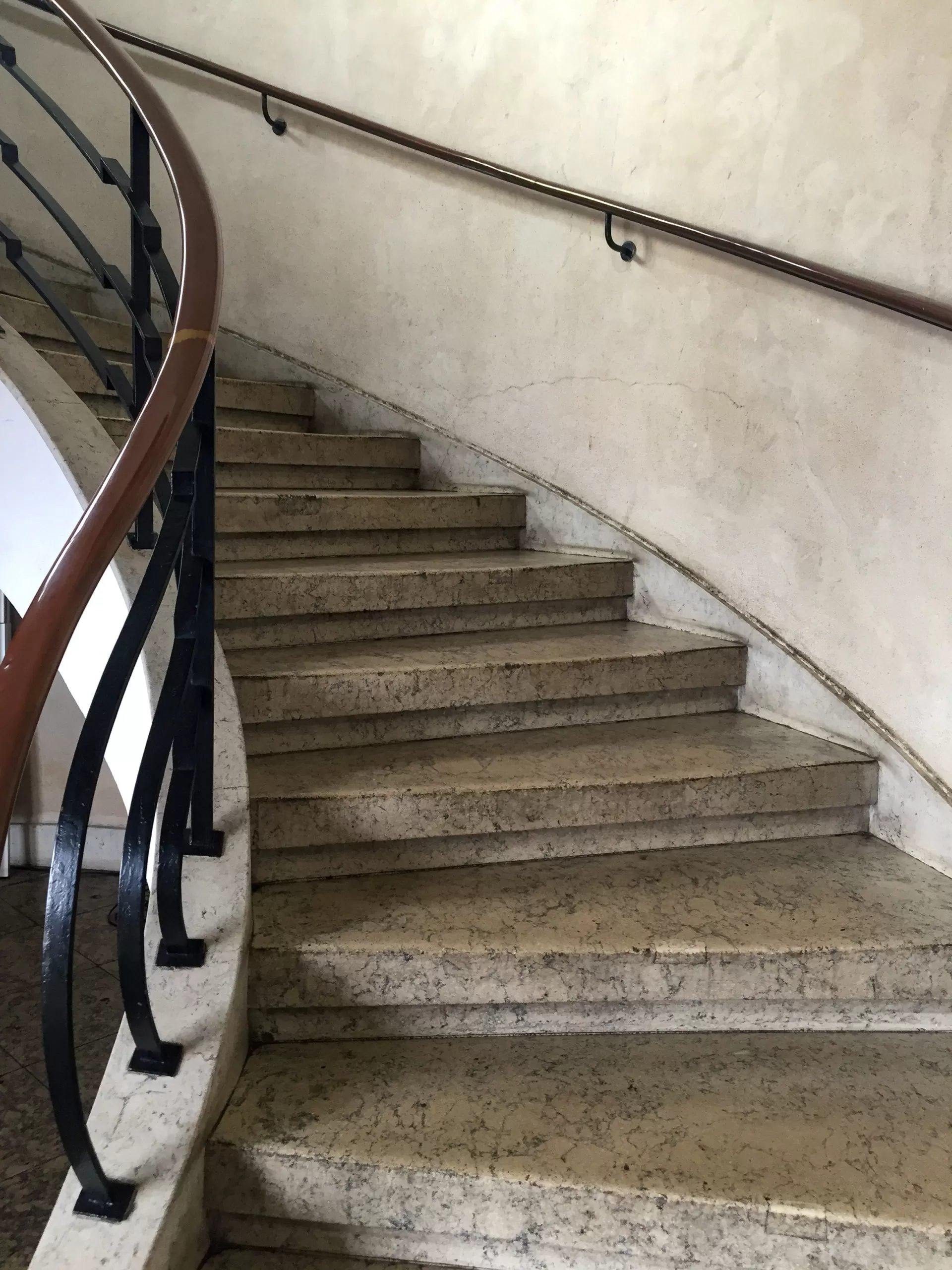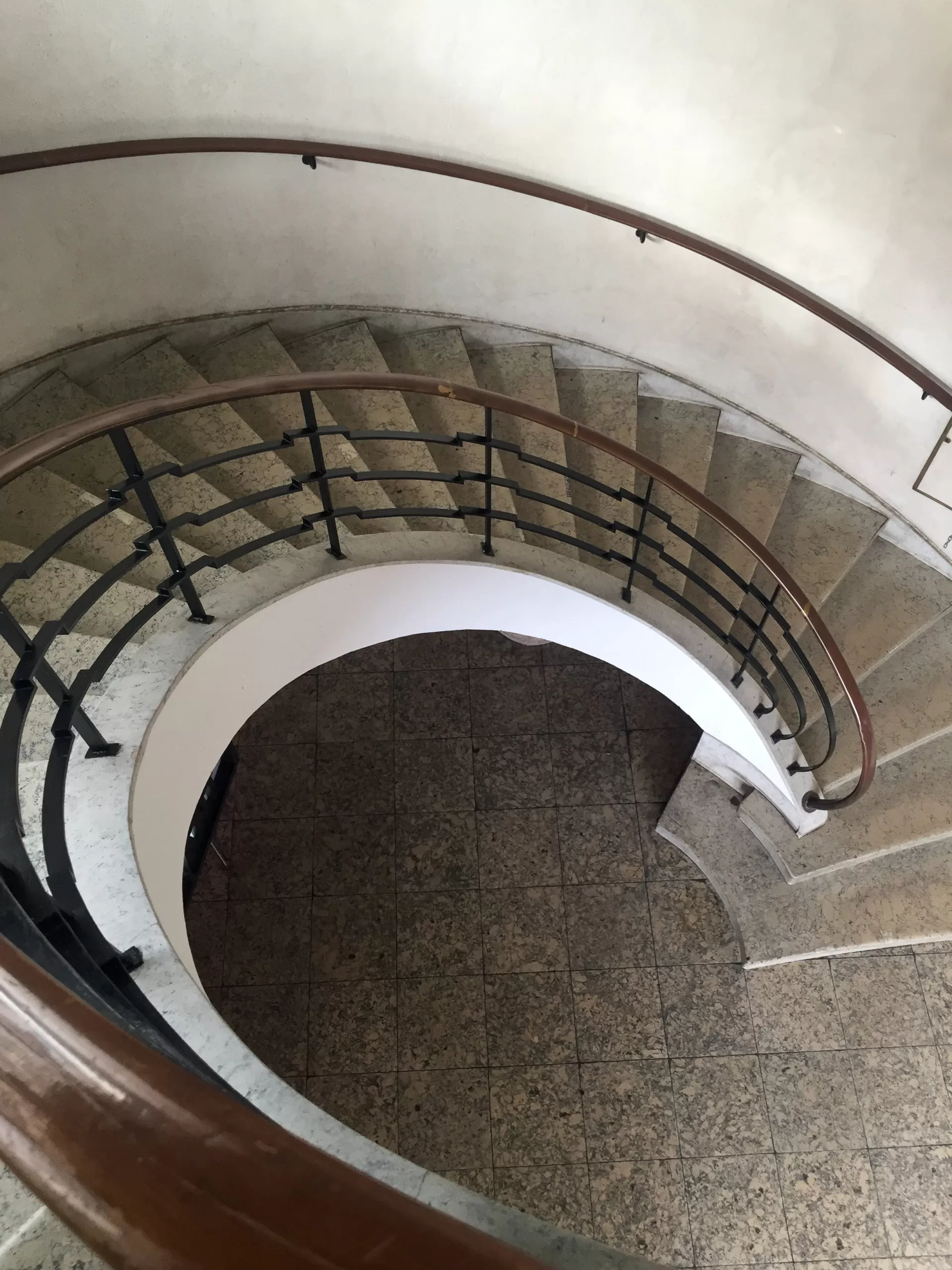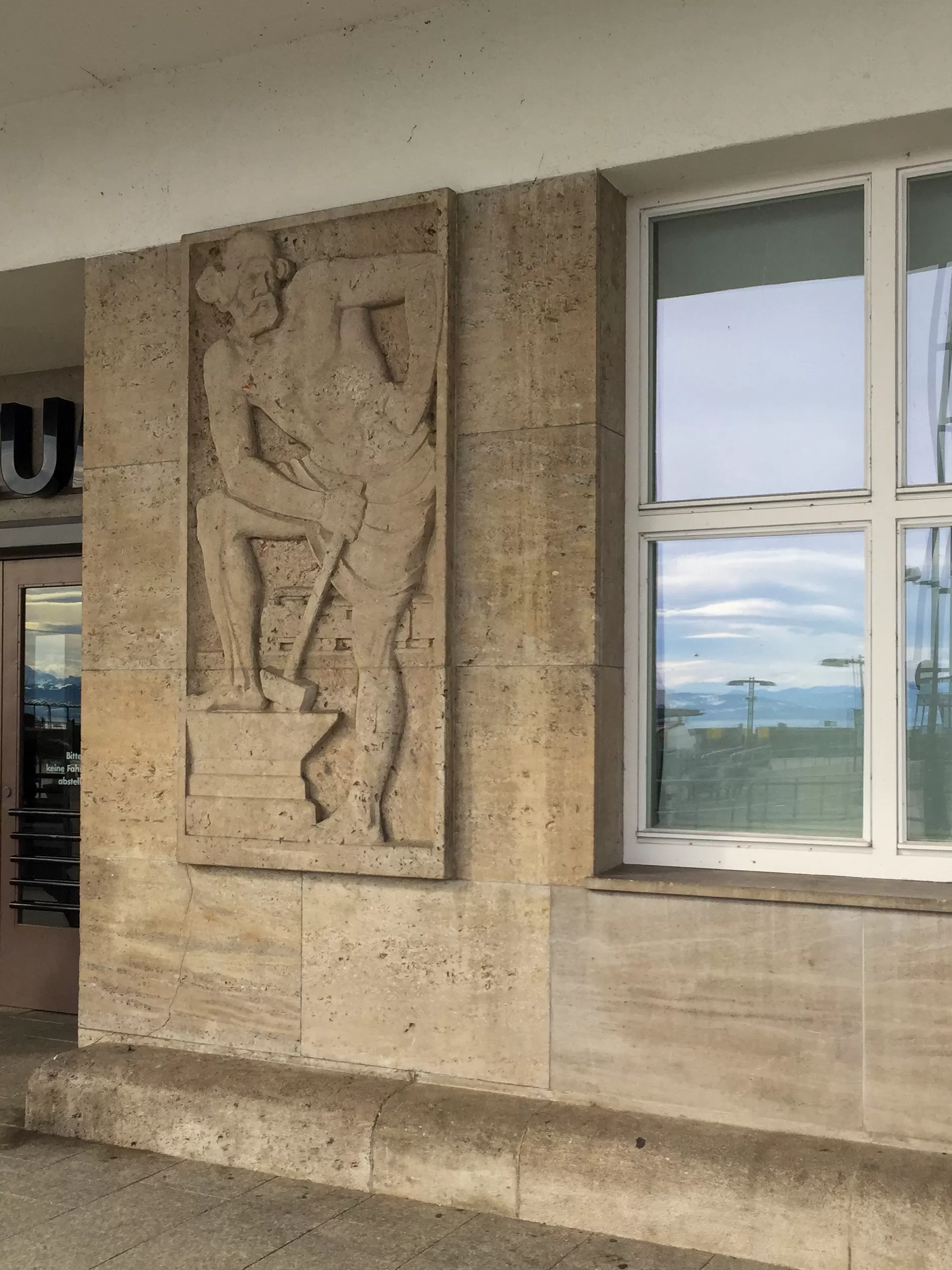1931 – 1933
Architect: Karl Hagenmayer
Seestraße 22, Friedrichshafen, Germany
Opened in 1933, the former reception building of the port railway station in Friedrichshafen on Lake Constance was built between 1931 and 1933 according to plans by architect Karl Hagenmayer in the New Objectivity style.
The building is a steel skeleton construction with hollow stone infill.
Today it houses the Zeppelin Museum Friedrichshafen.
Background
In 1847, Friedrichshafen became the first city on Lake Constance to receive a rail connection.
The Württemberg Southern Railway was to provide a rail link from the city station to the lake, enabling ships to be transferred directly to the railroad and thus significantly reducing transport costs.
In 1850, the first port railway station, attached to the east gable of the former Salzstadel, could be occupied.
Port Station
In 1869, rail ferry service across the lake began to the east of the port station.
From 1885 to 1886, a representative new building with half-timbered fronts and bay windows was erected on the site of the first simple harbor station; the upper floor housed a restaurant with a terrace.
Until a new post office was built, the post office was also housed here.
In 1929, the Deutsche Reichsbahn decided to unbundle the area around the harbor station, which was sprawling with many warehouse buildings and had become an obstacle to urban development.
The relocation of the freight station to Löwentaler Straße (1929/30) and the construction of a road underpass made room for a spacious new building for the harbor station, which Reichsbahn director Alfred Nägele had constructed according to plans by building councilor Karl Hagenmayer.
The tracks for passenger trains were laid on embankments behind the new port station to create the later Buchhornplatz.
Reconstruction and Conversion
Heavily destroyed during World War II, the harbor station was rebuilt according to the old plans.
In 1988, Deutsche Bahn sold the building to the city of Friedrichshafen.
From 1993 to 1996, it was converted into the Zeppelin Museum, after a new terminal building for the railroad, customs and shipping companies had been built at Fähreplatz.

